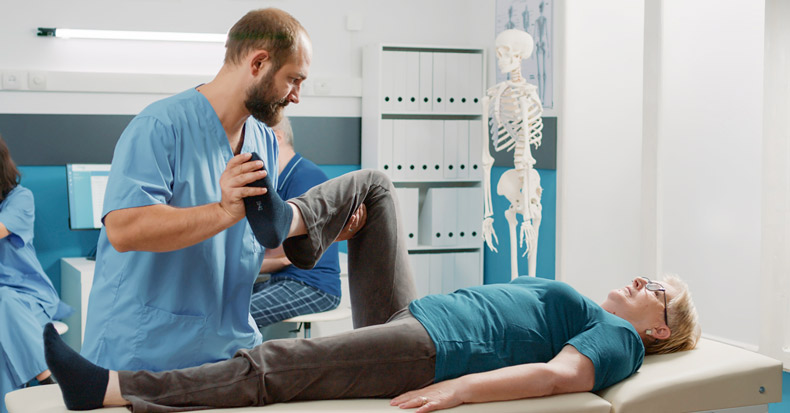Hip bursitis most often refers to trochanteric bursitis, an inflammation of the trochanteric bursa, a small fluid-filled sac located on the outer side of the hip. The primary symptom is pain on the outside of the hip near the greater trochanter—the bony bump at the top of the femur. The pain may be sharp, dull, […]
Internal vs. External Shoulder Impingement Syndrome
Most adults will experience shoulder pain at some point during their lifetime, and it’s estimated that nearly one-third of adults are affected each year. Among the many possible diagnoses, shoulder impingement syndrome accounts for roughly half of all shoulder pain cases. However, current understanding indicates that shoulder impingement syndrome is not a single diagnosis, but […]
What Is Iliotibial Band Syndrome?
Up to one-in-five adults experience knee pain each year, and many seek chiropractic care to find relief from both pain and disability. While knee pain can have many causes, when discomfort is concentrated on the outside of the knee in active adults, iliotibial band syndrome (ITBS) is an important condition to consider. The iliotibial band […]
The Most Common Cause of Hip Pain in Active Adults
Femoroacetabular impingement (FAI) is a painful hip condition that occurs when there is abnormal contact between the femoral head/neck junction and the rim of the acetabulum (hip socket) during certain movements, especially hip flexion, internal rotation, and adduction (inward motion). While hip problems are often associated with older adults, the vast majority of FAI cases […]
Four Reasons Shoulder Injuries Heal So Slowly
Shoulder injuries are a common complaint, affecting approximately 40 out of every 1,000 people each year. While the causes of shoulder pain and dysfunction vary, they all share one frustrating trait: they tend to heal slowly. In fact, many clinical guidelines published around the world recommend longer treatment durations for shoulder complaints compared to other […]
Conservative Treatment for ACL Rupture
The anterior cruciate ligament (ACL) is a strong band of connective tissue inside the knee joint that connects the femur (thigh bone) to the tibia (shin bone). Its primary role is to help stabilize the knee by preventing excessive forward movement and rotation of the tibia. Unlike muscles, ligaments like the ACL are not designed […]
Various Causes of Sciatica
Sciatica refers to pain that radiates along the path of the sciatic nerve, which extends from the lower back through the hips and buttocks and down one or both legs. The most common cause of sciatica is lumbar disk herniation, which compresses or irritates one of the nerve roots that make up the sciatic nerve. […]
Non-Surgical Management of Frozen Shoulder
Adhesive capsulitis, commonly known as frozen shoulder, is a condition characterized by painful and restricted shoulder movement. It affects approximately 2-5% of the United States population, most frequently in adults aged 40 to 60. The condition develops gradually, beginning with a “freezing” phase in which movement becomes increasingly painful and limited. This stage can last […]
A Common Cause of Kneecap Pain
Patellofemoral pain syndrome (PFPS) is characterized by pain in the front region of the knee, around the patella (kneecap), and is often described as stabbing, aching, and/or burning—especially during movements that increase pressure between the femur and patella. Common aggravating activities include prolonged sitting, transitioning from sitting to standing, climbing or descending stairs, kneeling, squatting, […]
Active Vs. Passive Treatment for Hip Pain
Patients frequently seek chiropractic care for hip-related conditions—such as femoroacetabular impingement, developmental dysplasia of the hip, labral tears, and cartilage injuries—often in hopes of preventing or delaying surgery. Fortunately, treatment guidelines for these and many musculoskeletal conditions typically recommend non-surgical approaches as the first line of treatment. But which manual therapies provided by chiropractors are […]
- 1
- 2
- 3
- …
- 12
- Next Page »









